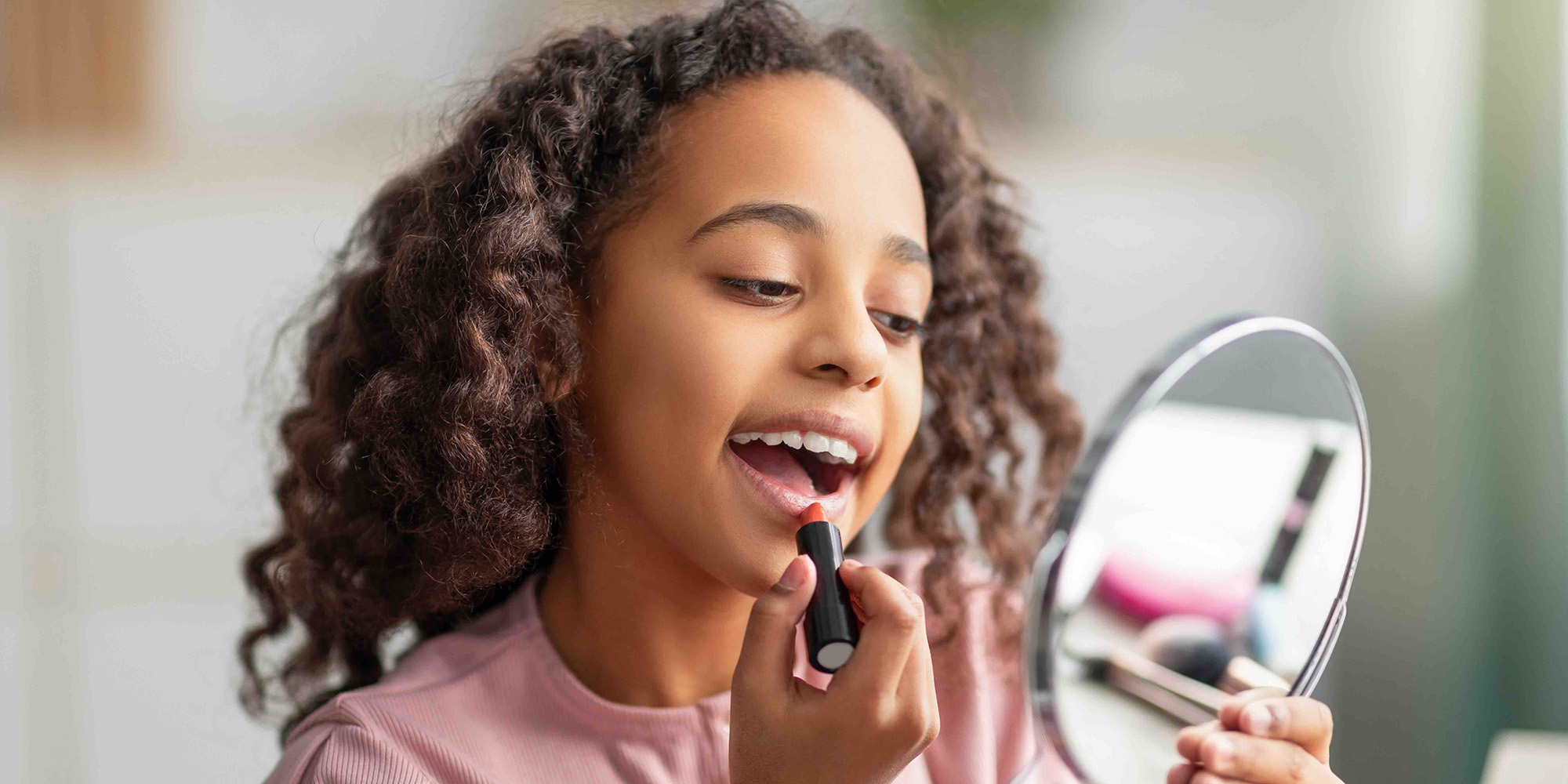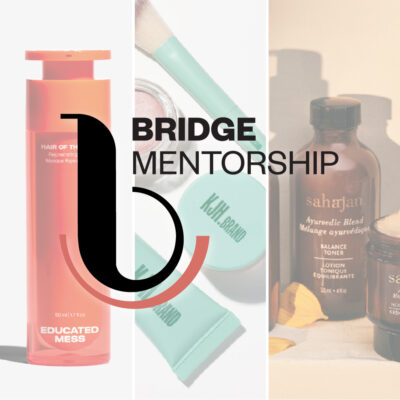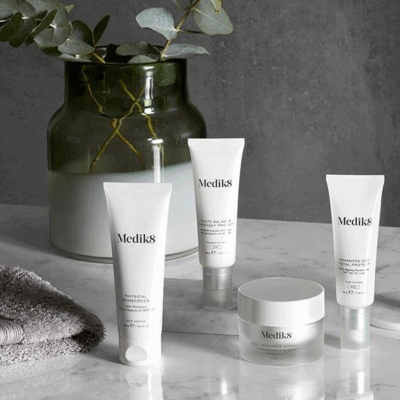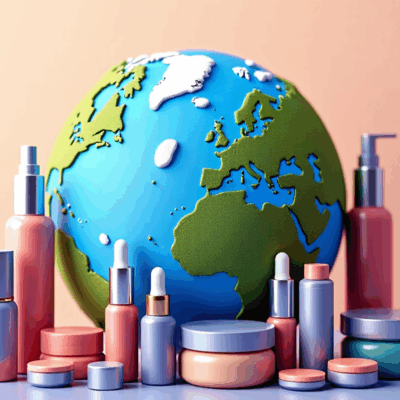
Bye-Bye Gen Z Neon. These Design Elements Are Catching Gen Alpha’s Eye.
Millennial design was characterized by minimalism, pink shades and san serif fonts. Gen Z design is characterized by in-your-face bright colors, bold typography and imperfections. As gen alpha becomes a major base of purchasing power in the beauty industry (yes, we’re talking about Sephora Kids), we were wondering about the design motifs that will typify this next generation of consumers.
So, for the latest edition of our ongoing series posing questions relevant to indie beauty, we asked 12 design, branding and public relations professionals the following question: What do you think will characterize gen alpha design?
- Jonina Skaggs Partner and Art Director, Skaggs
Pastel and the noughties aesthetic will continue to dominate, particularly among gen A brands. We’ll see the glitter and the complete pastel color spectrum, but with a touch of that cute aesthetic that dominated the early 2000s (think Powerpuff Girls and bedazzled Blackberries). Glossier’s latest collaboration with Starface for its pimple patches is a good example.
If you remember cell phone charms in the noughties, gen A brands have taken note as well such as Indu’s newest mascara and even Kaja’s jelly charm lip and blush stain. This movement towards easily accessible makeup products doubling as accessories is gaining momentum. Fenty’s limited edition clip-on gloss caters to the older demographic, and Hailey Bieber’s prototype phone case for her Rhode lip gloss brand has ignited a social media frenzy. The fusion of beauty and fashion is unmistakably on the rise as these brands tap into the nostalgia and playful vibes of the past.
Gen Z and gen alpha are very values-driven. They’re unfussy and direct, very savvy when it comes to shopping, and they do not consider being eco-conscious a passing trend. They have grown up with this and are known to stick to their values and pay a bit more if it means that a product is easy to use, multifunctional, refillable and recyclable.
Authenticity and transparency also extend beyond packaging and design. Models are less airbrushed and more “real” by showing imperfections, and website and packaging copy is shorter and direct when listing out product’s benefits. As a result of this, you’ll notice an increase in space on both packaging and websites, still maintaining a minimalistic aesthetic while accommodating this values-driven approach.
- Ruba Tadros Co-Founder and Creative Director, Monolith Collective
As a millennial parent to two gen alphas, this is something I think about quite a bit. I think there will be millennial influence on the new generation. We are parenting and raising them after all. It could be the minimalism that helped to shape millennials, more so in the way of life—less is more, less over-consumption, more mindfulness to the environment, more intentional design.
I also think there will be an aspect of "new futurism," with the use of AI and the evolution of how it will play a role in creative/design. We might be seeing cool, dream-like worlds that we haven't seen before. Think retrofuturism, but for the modern world.
- Robin Tolkan-Doyle Founder, Charmed Public Relations and Beautyologie
Since gen alpha has been digitally plugged in since birth, they are the most tech-savvy generation to date. A majority of their news is delivered to them from social media apps like TikTok, Snapchat and YouTube, so it makes sense that their perspective on beauty will evolve from whatever is trending virally. Beauty brands already know this.
So far, we’ve seen gen alpha attracted to the restrained aesthetic that millennials made famous, but infused with range of bold expressive colors indicating their confidence and ambition. Gen alpha consumers are also strong supporters of diversity and inclusivity, so products and packaging that are non-gender-specific in design are taking precedence.
They are equally involved in supporting sustainability and with that comes the non-negotiable requirement for products to be eco-friendly, recyclable and ethically sourced with minimum harm to the environment.
- Robin Marshall Partner and VP of Strategy, Case
In a word? Iteration. For gen alpha, the future of design will likely mirror their inherently iterative nature. As digital natives, their online world is as real as the physical, giving them infinite inspiration for a range of new aesthetic visions. If it doesn’t work out, they’ll just call it an “era” and move on.
This sentiment gives brands permission to embrace creative malleability, perhaps inspiring a more fluid beauty landscape. The challenge for traditional brands will be to let go of consistency a little bit and think like more an alpha: experiment, learn, and iterate. Staying the same is boring.
- Leslie Ann Hall Founder and CEO, Iced Media
Over the past year we have witnessed the biggest shift in creative direction our generation of beauty marketers has seen. We call it the TikTokification of content, and it requires brand stakeholders to toss out their style guide and rewrite the playbook on brand and product storytelling.
In the U.S., where 75% of gen Z is active on TikTok, the “lo-fi aesthetic’”results in 33% stronger consideration for unpolished ads on the platform. At Iced Media, where we benchmark tens of thousands of social ads across all beauty categories, we see this trend growing well beyond TikTok. Across the social media ecosystem, creator-led, “lo-fi” content outperforms traditional brand ads by over two to one.
Gen alpha is entering the marketplace, too, with the oldest among that cohort meeting the requirement to have social media accounts of their own on Instagram, TikTok, Snapchat and YouTube, where the minimum age is 13. The younger members of this generation are more likely to be viewing content on an iPad, usually watching YouTube Shorts or TikTok, providing for a larger screen with more real estate. Having grown up watching influencers on social media, gen alpha is conditioned for more fast-moving images and shorter content that requires less of an attention span.
For many beauty marketers, catering to these younger viewers requires a complete mindset shift, primarily because they are relinquishing control of their positioning in favor of creator-led, short-form videos. It is especially difficult for prestige or luxury stakeholders where historically refined and elevated positioning were hallmarks of the brand positioning and prescriptive brand guidelines were mandated. Our research shows this type of brand-led, polished creative is no longer driving the strongest results, and brands leading with lo-fi, creator-led content win.
Over a third of TikTok users are between the ages of 10 and 19, making gen alpha and gen Z combined the largest group of cohorts on its platform. While 74% of gen Z perceive TikTok creators as reliable and 58% are more likely to trust a brand when first learning about them from a creator, that doesn’t mean stakeholders should stop there. There are key concept, design and story elements that producers can include allowing brands of all sizes to compete and win on TikTok.
- Elisa Vitale VP of Design, Base Beauty Creative Agency
Following on the heels of gen Z, Gen Alpha shares the same values of inclusivity, social progressiveness, and sustainability, but even more vocally. Brands should be positioning their social and environmental stances front and center in their communications and making them highly visible on their (sustainably sourced and eco-friendly) packaging.
Further moving away from single-use containers and sourcing materials from suppliers with ethical labor practices is more important than ever. Gen alpha wants to buy products that reflect their values.
As gen alpha matures (they are currently ages 14 and under), their color preferences and design aesthetics may change, but at least for now, we anticipate that bright, optimistic colors with a heavy dose of pink continue to dominate in design as we have seen in the popular preppy skincare and fashion trend.
Lastly, since gen alpha was born into a screen-driven world, companies would also be wise to leverage augmented and virtual reality technologies in their marketing efforts. Gen alpha loves immersive experiences and shopping is no different.
We also see brands including more QR codes in packaging and advertising as a way to further educate the gen alpha consumer about their products, ingredients and corporate social philosophies.
- Lindsey Smolan Founder and President, VLIV Communications
Many brands we work with who target a gen Z audience tend to favor bold neon yellows and purples, ornate fonts and a playful vibe. This seems to tie into the desire to stand out, express their values and individuality, and celebrate uniqueness. Brands that seek to disrupt a category often turn to eye-catching design to signify their shift away from unconventionally.
I think that the gen alpha aesthetic will lean towards playful, bright colors and designs that can be described as whimsical, but fresh. Many are the children of millennials, so some of the traditional millennial vibe might influence this younger generation, but with a more dynamic feel.
That said, this generation is still so young (some of them not being born yet!) that, with anything, it could change as they mature and develop their tastes and place in the world. But I predict the majority of the aesthetic will lean heavily into their young age, but still appeal to millennial parents, with pastels, decorative and/or script fonts and packaging that can be described as "cute," but still aesthetically pleasing for the parents.
As a beauty PR agency owner, my team and I see that editors sometimes prefer this style as well. The bold colors and distinct fonts stand out on the screen or on the page and can be a scroll stopper. It helps establish brand identity and reinforce a brand's POV and what it stands for, which is crucial when playing in a crowded space.
That said, ultimately brands should cater to their core audiences when it comes to creating brand identity and packaging. If gen Zers are your target audience, then the colorful, playful aesthetic is great to consider, but don't let your brand get swept away by trends either. Your brand identity and design should reflect and reinforce your core brand pillars and ethos.
- Megan Brown Bennett CEO, Light Years Ahead
I think it's all going to be about transparency going forward. Brands will be willing to show more information on their packaging instead of hiding specific things that they don't want consumers to see. Gen Z and gen alpha are not afraid to shout. They are messaging it to the world.
People are also talking about more embarrassing beauty problems and grooming issues than ever before, and I believe that there will be new brands to address these problems head on.
- Suki Mulberg Altamirano Founder and Principal, Lexington Public Relations
Gen alpha has grown up with technology in a way no generation before them has, technology that’s personalized, immersive, customizable and constant. Social media has made them more aware than ever of trends, and a record amount of them are already following a skincare routine or using color cosmetics.
AI is changing the way they’re able to interact with brands, try and consume products. Brands will have to bring transparency combined with simple, straightforward design to capture their attention.
This generation’s exposure to relentless marketing from their youth will make them wise to marketing tactics, and I think we’ll see gen alpha resonate with colors that are sharp and design that’s sleek, modern and sophisticated.
- Lara Schmoisman Founder and CEO, The Darl
As gen alpha embraces technology early on, they're becoming a discerning consumer group. Misleading brand claims do not easily sway them, but rather value honesty, transparency and consistency. Brands must grasp this shift in consumer behavior to meet the preferences of gen alpha effectively.
- Katie Motta Founder and CEO, Alluring Media Co. and Jade Stone
Find gen alpha at the crossroads of millennial and gen Z design. While simplistic millennial design elements feel familiar to gen alpha, the boldness of gen Z’s design trends excites them. These concepts combine with sophisticated packaging innovations to create what I refer to as “vibrant minimalism.”
A perfect example of this style is Drunk Elephant, a skincare brand wildly popular with gen alpha. Its colorful yet simple, refined designs have captured gen alpha’s hearts. Expect to see a return to serif fonts, bright colors and icons on light-colored packaging vessels as well as flamboyant color gradients for a bit of flare (think Indu).
Because generation alpha is being raised predominantly by millennial parents, their childhood was dictated by design trends such as millennial pink and sad beige. Their parents insisted on neutral-colored toys and dressing them like tiny adults unlike millennial and gen Z’s childhood experience, which was defined by bright mismatched colors and Libby Lu makeovers.
Furthermore, while millennials and Zers grew up with LeapPads, gen alpha accessed the full power of the Internet with iPads before they learned to walk. Gen alpha’s unlimited internet access and early exposure to adult aesthetics now manifest in hyperfixations on beauty and fashion trends and extensive knowledge about skincare ingredients, top brands, and influencer culture. Because of their acute trend awareness and high standards for brands, gen alpha wants the products they use to be status symbols.
The overarching theme of gen alpha’s role in the beauty sector is innovation. Gen alpha wants to decide what comes next and being “the first” is important to them. They want to dictate what goes into their products, how they look and how they’re packaged. Expect gen A to continue to follow their unapologetic sense of self and be characterized by prestige brands that can keep up with their ever-changing preferences and high standards.
If you have a question you’d like Beauty Independent to ask branding, design and public relations professionals, please send it to editor@beautyindependent.com.






Leave a Reply
You must be logged in to post a comment.